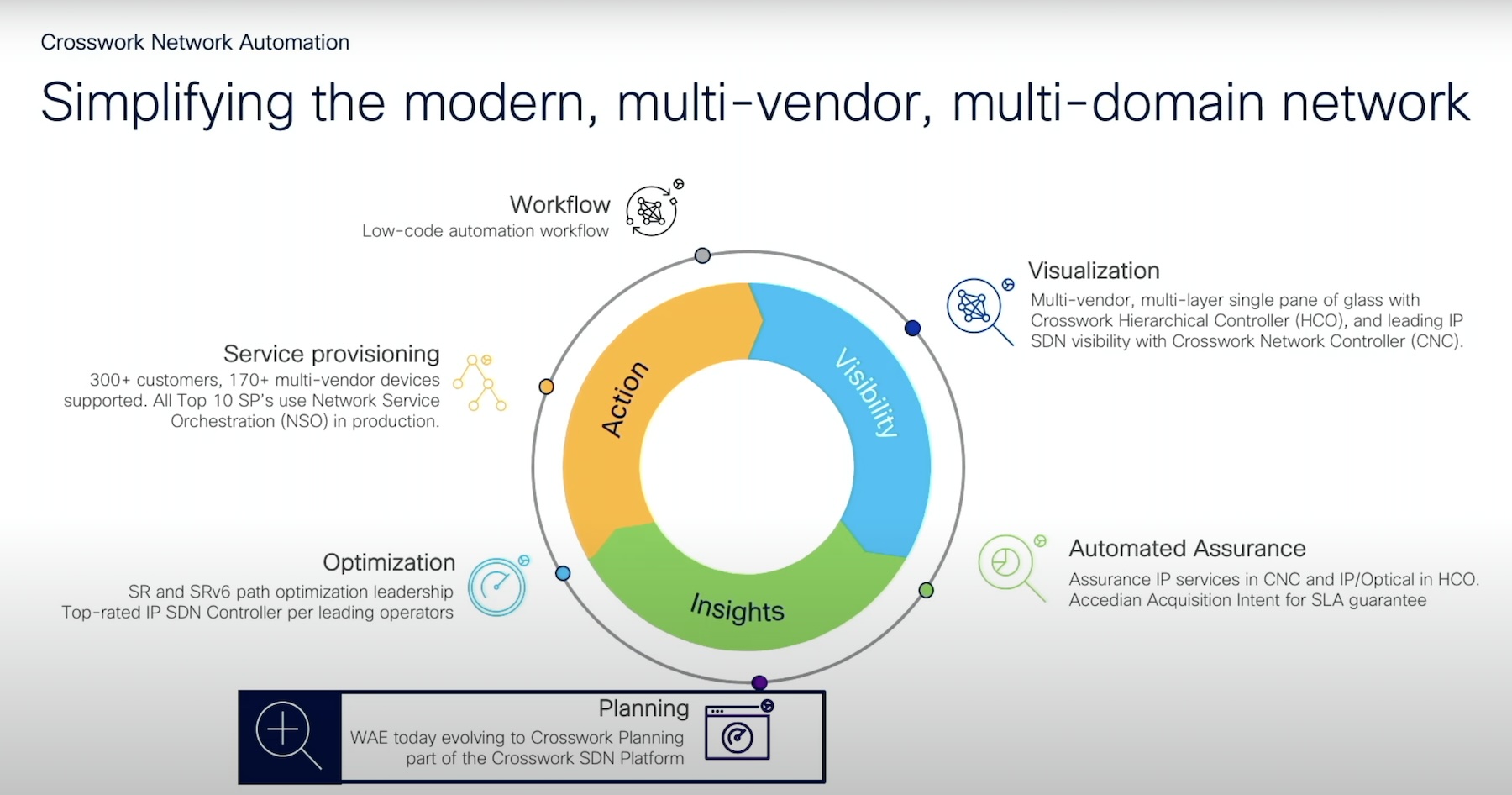People at the top assume that networking professionals working in the tiers below are fully informed about the network, and are weighing their options methodically while making decisions. This assumption is slightly off because in reality, those professionals are only working with the information available to them.
When a failure is chronic, for example, they draft reusable plans and tune the network. But there are corners they cannot see around, and in those situations, they are left to respond with logic and instinct. The problem is, logic, spread across multiple personas and roles, become varied and conflicting.
“At scale, the bottleneck for automation are humans,” remarks Eleni Palkopoulou, engineering architect at Cisco, during Tech Field Day Extra at Cisco Live US 2024.
The goal of automation is to tune up efficiency by offloading the burden from humans. But it has limited decision-making skills.
Talking about network operations lifecycle, Palkopoulou says that every process boils down to a series of decisions and subsequent actions. Automation principally targets the latter. The toolsets available to us all aim to reduce human input and autocomplete the actions. But decision-making is still a people’s burden.
Steering the Course of Automation
Cisco is changing the premise by adding decision-making to the scope of automation. At Cisco Live US 2024, Cisco launched Crosswork, a network automation solution that assists with both decisions and actions.
The vision is set on strong foundations. Cisco’s long legacy lays the groundwork for it. “We’ve become the oracle of the networks,” says John Lehane, engineering product manager. “We understand exactly what’s happening on the network.”
Crosswork brings to offer a complement of tools, each designed to automate an individual process in the network operations lifecycle. Notably, Crosswork automates the steps leading up to the decision-making part so that operators can make better and faster decisions.
“What we wanted to do is automate the information-gathering which is the data part, and codify the knowledge and the reasoning as well,” says Palkopoulou.
Crosswork Makes It Better with AI
Automation is a great way to even out variability in human performance, but it is neither proactive, nor predictive. “With AI we can make this better,” she says.
AI’s human-level intelligence, logic and perfection are integral to delivering safe, reliable and consistent outcomes. Key to that is application.
“AI is a toolset and as with all toolsets, it’s very important to know what tool to use for what job. You’re not going to use a drill when you must use a hammer.”
Crosswork is powered by AI algorithms, and creative optimization techniques that are individually assigned a primary, a secondary and tertiary objective.
Central to Crosswork is the network model.
“Many people pass this by, but the network model is a very fundamental thing. It’s the foundation to any sort of predictive analysis, and your view of the world,” Palkopoulou emphasizes.
Crosswork leverages an AI-produced mathematical clone of the network. This digital twin provides visibility into all future states and predicts failures and threshold violations in advance.
The goal is to simulate what-if scenarios, she says, so that operators can see what a failure will look like and in what ways it will impact its radius, well before it happens.
Crosswork’s sim analysis tool can sequentially fail every link through every circuit mapping out the impact clearly.
“We’re doing this all in the abstract. We’re not doing it on the production network,” says Lehane.
Crosswork touches a series of use cases. In a multi-vendor, multi-domain network, it provides visualization of topology and inventory, bandwidth optimization, service provisioning, local congestion management, zero-touch onboarding and more.
AI-led designs provide at-a-glance view of the network, and color codes point to the problem parts.
Two blocks in particular dialed into focus during the session – planning and optimization.
Network planning entails inventorying assets, predicting future network behavior and planning to address any changes. Optimization is primarily keeping the KPIs tuned to make the network function better. But a large part of it is ensuring a resilient operation that enables administrators to respond quickly to fast-changing conditions.

Countless data points are required to answer the questions that pop up in the planning stage. “These are the questions that operators and planners grapple with daily,” says Lehane.
The optimal solution should provide answers to these questions, and on a daily basis, help gain network performance and improve human efficiency.
Cisco Crosswork combines low-code automation workflows, heuristics packages and an optimization engine. These provide automated network assurance, while trimming down costs through elimination of unnecessary over-provisioning.
A plethora of automation tools unlock low-touch operations for the most complex processes. These include tooling for path optimization, parameter optimization, metric optimization, capacity planning, failure analysis, demand deduction, and migration between network model instances.
Be sure to check out the Cisco Crosswork demo shown in this session at the Tech Field Day Extra at Cisco Live US 2024.

